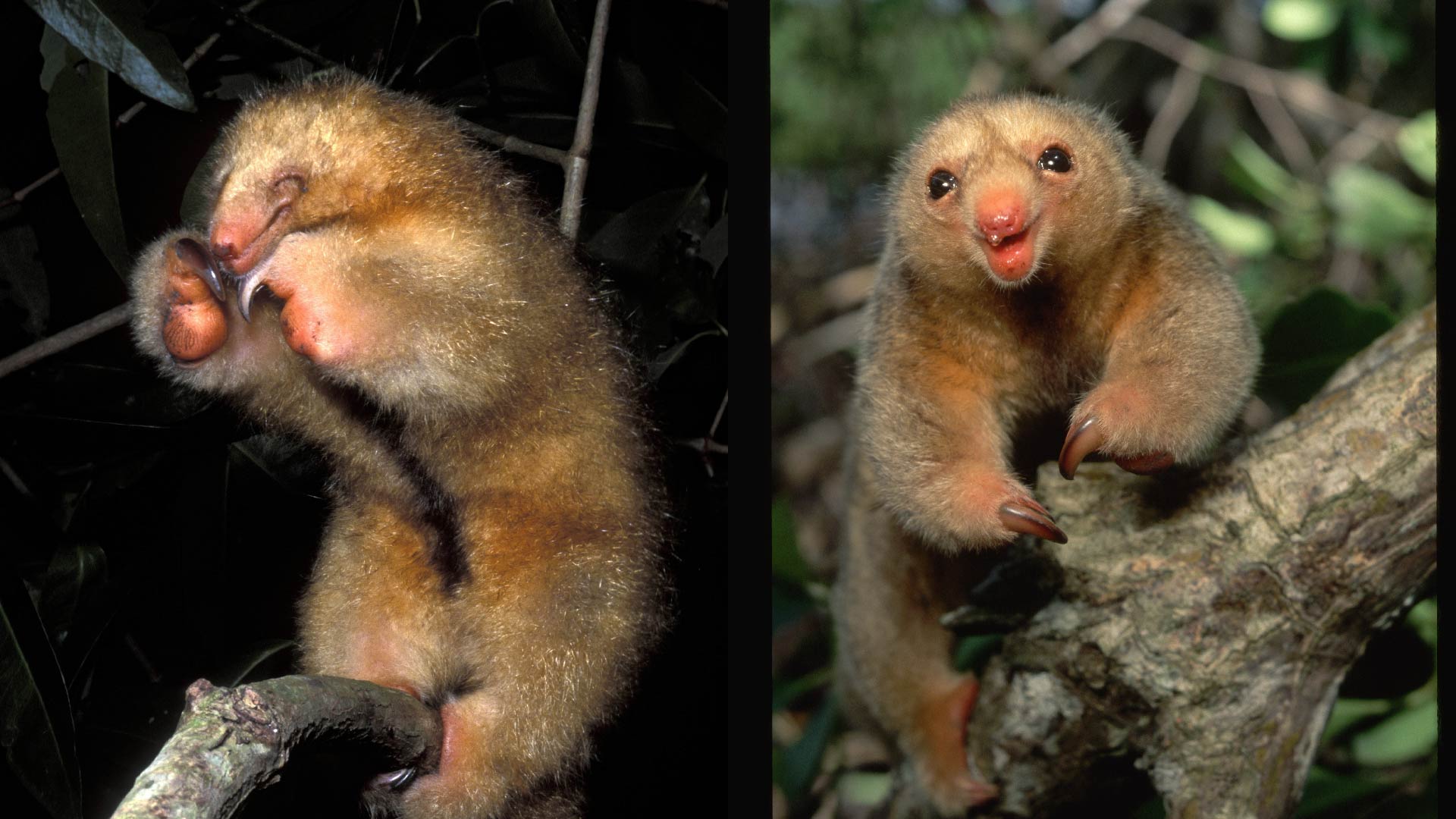
Name: Silky anteater (Cyclopes didactylus)
Where it lives: From southern Mexico to South America (Peru, Bolivia and Brazil)
What it eats: Ants, wasps, wasp pupae, termites and small beetles
Why it's awesome: At only around 14 ounces (400 grams) and 14 to 18 inches (35 to 45 centimeters) long (including its tail), the silky anteater is the world's smallest anteater. This solitary animal has dense, soft fur. But although it may look cute and fluffy, make no mistake: This creature will put up a fight when it's threatened.
When a silky anteater encounters a threat, it uses its tail as an anchor, stands on its hind legs, and strikes using its large, curved claws. Itsr tail is longer than its body and prehensile, meaning it can hold onto things.
And the silky anteater, also called the pygmy anteater, has another trick to defend itself: When it detects a predator, such as a harpy eagle (Harpia harpyja) or a spectacled owl (Pulsatrix perspicillata), it curls into a ball to resemble the seed pods found in silk-cotton trees to avoid being seen.
Silky anteaters are arboreal, meaning they live in the treetops of lowland rainforests and rarely descend to the ground. Their feet are modified to climb and have long claws to grip tree trunks and branches.
Biologists used to think all silkies were a single species. But in 2018, a taxonomic review — which examined the DNA, color patterns and bone structures of 287 live and museum specimens — revealed that there may be more than seven species of this tiny animal.
As their name suggests, they primarily eat ants — and they consume up to 5,000 of these insects a day. Their long claws help them rip open ant nests. They use their sensitive pink-tipped nose to sniff out food and their sticky, long tongue to trap ants and other small insects.
Like all anteaters, the silky lacks teeth. Scientists think that over millions of years, anteaters lost the genes to make tooth enamel because they ate soft insects that didn't require strong teeth, according to a 2023 study.







